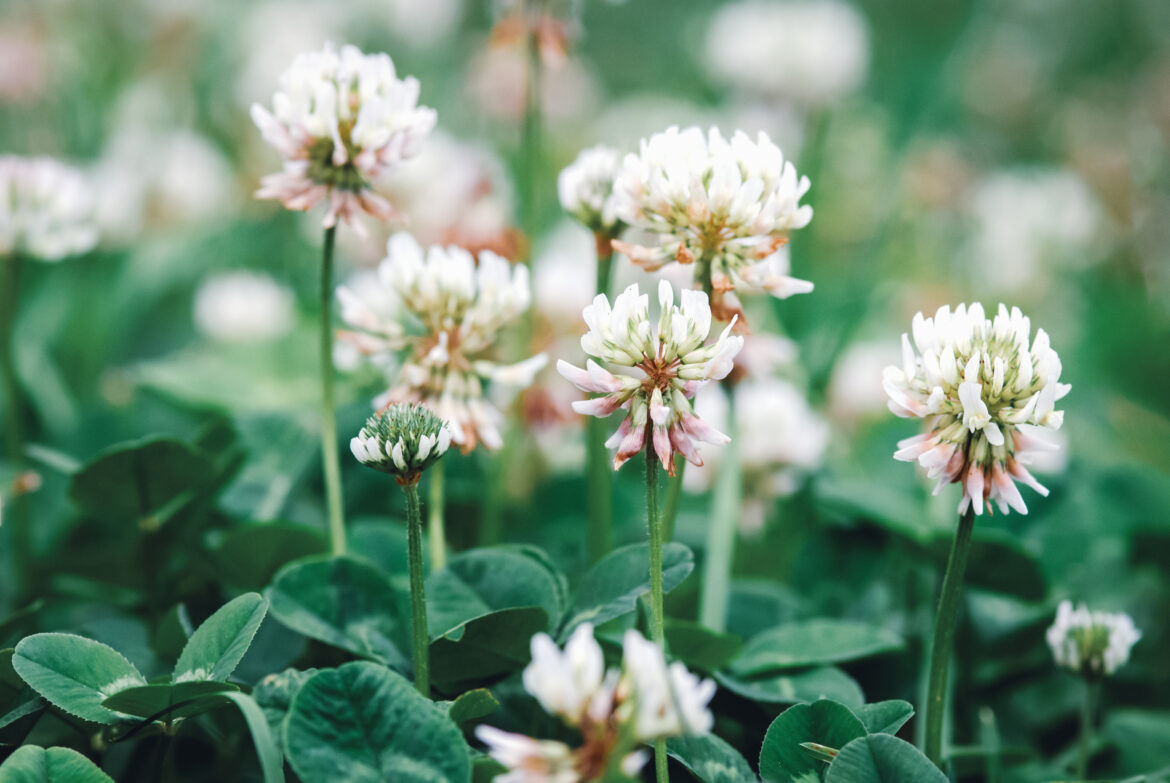
Clover: Nature’s Swiss Army Knife Crop
If one had to come up with a symbol for the month of March, the image that comes to mind might just be a four leaf clover. Between the month’s St. Patrick’s Day holiday and early spring’s new growth, clover is a worthy choice. But beyond its lucky connotations, clover is a versatile and useful plant that aids farmers and homeowners alike. Hardy and adaptable, clover can be found growing in diverse conditions, from dry, flat ground in full sun to clinging to the side of a shady hill. Its beauty lies in its rich colors and pretty, delicate flowers; it’s advantage lies in its growth.
It would be difficult to match clover’s advantage as a cover crop! A legume, clover transforms nitrogen gas found in soil into organic compounds that fertilize plants—up to 150 lbs per acre. Known as a “nitrogen fixer,” clover works in tandem with the beneficial bacteria, Rhizobia, to surround plants with nutrients, fueling growth.
Clover’s fibrous root systems aerate and loosen soil while simultaneously preventing erosion and, due to its high biomass, excellent weed control, limiting the need for herbicides. Its dense foliage prevents water evaporation, helping to keep soil moist. As it dies, clover becomes “green manure compost” that adds organic matter back to the soil. One type, red clover, can yield up to 2 to 3 tons of dry matter per acre.
Drought tolerant and quick growing, clover is beloved by pollinators. Honeybees aren’t the only beneficial insects that seek out clover’s flowers; garden predators like ladybugs, lacewings, and parasitoid wasps are all drawn to clover’s pollen and nectar, reducing the need for pesticides.
Most livestock species thrive on clover fields, making it a common pasture plant. An exception being equines that can develop either “the slobbers” from clover infected with the fungal toxin, slaframine, that stimulates the salivary glands, or photosensitivity from the alsike clover toxin, causing, at minimum, skin lesions, and at worst, liver failure. The coumarin in sweet clover can lead to hemorrhaging in cattle, sheep, and goats. Proper pasture maintenance and hay curing techniques can alleviate some of these issues.
Clover is quite a plant!

Waterborne Environmental, Inc. Hired to Create Online Dashboard That Tracks Nutrient Loss Across the State of Missouri
READ MORE

Swimming with Bacteria: Water Quality Concerns at the 2024 Paris Olympics
READ MORE

The Right Tool – Multidimensional Models
READ MORE



